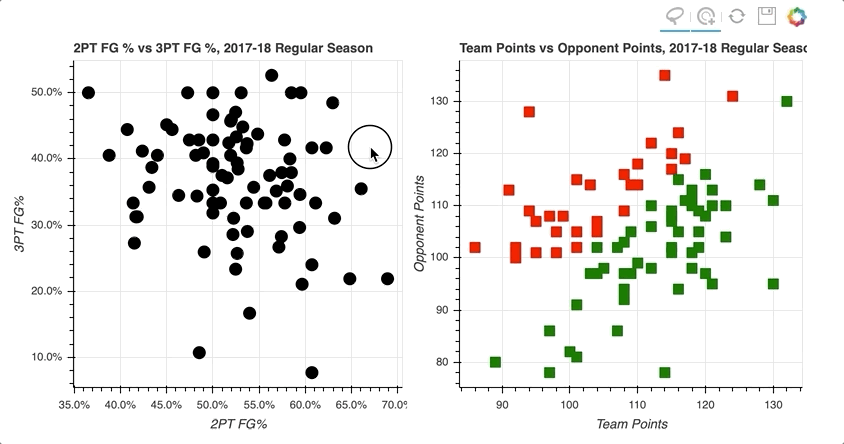

This example shows you how to create a single line glyph using a one-dimensional sequence of x and y data points using the line() glyph. Plot.line(x,y, line_width=2, color='green') Plot = figure(width=400, height=400, title="Simple line plot", x_axis_label="x-axis", y_axis_label = 'y-axis') #Import the required packagesįrom bokeh.io import output_notebook, output_file, show
#Python bokeh code
The code shows you how to create a simple line plot in bokeh.

#Python bokeh Patch
Patch plots: Patch plots show a region of points using a particular color.Bar plots are appropriate for categorizing data. Bar plots: Bar plots represent the count of each category as a column or field.Line plots are appropriate for plotting time series data. Line plots: Line plots present movement of data points along the x and y-axes as a line.In summary, we are going to plot the following plots using glyphs: This tutorial will help you understand glyphs by showing you how to use glyphs to create various types of plots. They convey visual information about data. These geometric shapes (lines or circles) are what we call glyphs in Bokeh. A line will represent information on a line plot. For example, when you want to create a scatter plot, you may use a circle as a marker to represent information. Every plot you build in Bokeh has a glyph mechanism in it. Glyphs are Bokeh's key building blocks that create plots. Welcome to Glyphs What are glyphs anyway? You can also check out Github for solving Bokeh issues. If you are having problems with installing Bokeh, you can check out Discourse for help. Verify your installation from bokeh.io import output_notebook, show
#Python bokeh install
Install within Jupyter Notebook !pip install bokeh You can also install it using pip python package manager, as follows: pip install bokeh

If Anaconda is your Python package manager, then you can install Bokeh from Anaconda Prompt, Windows Command Prompt, or Bash Terminal, as follows: conda install bokeh How To Install Bokeh Install using Anaconda Bokeh can help you to create interactive plots, dashboards, and data applications. You will learn how to create interactive visualizations and deploy them on the web using the Bokeh library. This tutorial requires that you have some basic knowledge of Python and know how to install and import packages. If you are a data scientist, data analyst, or machine learning engineer.


 0 kommentar(er)
0 kommentar(er)
